Contents
- Free food grains scheme PMGKAY extended
- China opens border dispute with Bhutan
- China investing, trading through a third party
- 46 million girls went missing in India, says UNFPA report
- Eight core industries’ output contracts 23.4% in May 2020
- Globba andersonii thought to be extinct found in Sikkim
FREE FOOD GRAINS SCHEME PMGKAY EXTENDED
Focus: GS-II Social Justice
Why in news?
Prime Minister announced that the free grain distribution scheme under the Pradhan Mantri Gareeb Kalyan Anna Yojana (PMGKAY) will be extended till the end of November.
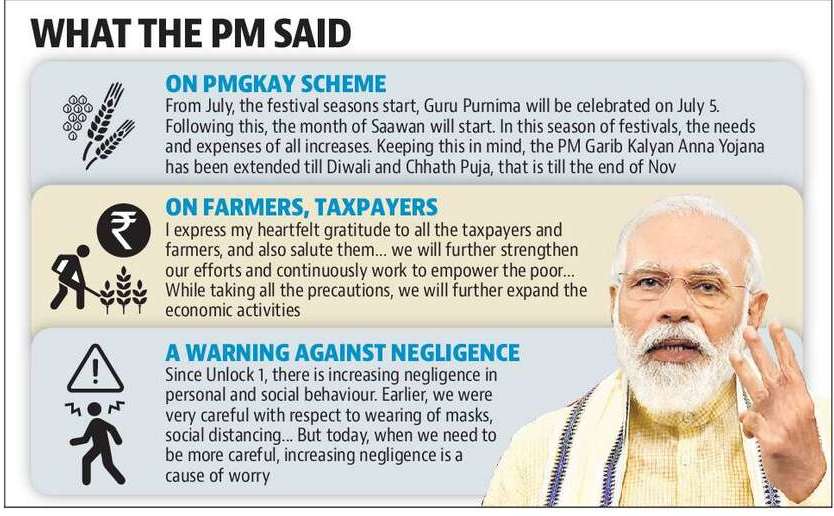
Highlights
Under this scheme five kilograms of free rice or wheat, and one kilogram of chana/Pulses will be provided free to 80 crore Indians (i.e, roughly two-thirds of India’s population covered under this scheme) till the end of November.
Under Pradhan Mantri Garib Kalyan Anna Yojana (PMGKAY)
- Each one of the 80 crore Indians would be provided double (5+5Kgs) of their current entitlement of Rice and Wheat.
- This additionality would be free of cost.
- Pulses: To ensure adequate availability of protein to all the above-mentioned individuals, 1 kg per family, would be provided pulses according to regional preferences for next three months.
- These pulses would be provided free of cost by the Government of India.
Click Here to read more about the Pradhan Mantri Garib Kalyan Yojana (PMGKY)
-Source: The Hindu
CHINA OPENS BORDER DISPUTE WITH BHUTAN
Focus: GS-II International Relations
Why in news?
- China has now created a new border dispute with Bhutan, one of India’s traditional ally.
- Beijing has been aggressively attempting to alter the status quo in East China Sea, South China Sea and with India in Arunachal Pradesh and Ladakh.
Details
- At a virtual meeting of the Global Environment Facility (GEF) Beijing objected to the grant for Sakteng Wildlife Sanctuary (SWS) in eastern Bhutan’s Trashigang district bordering India and China, claiming that the location was disputed.
- The majority of the GEF council members supported Bhutan’s view and the draft summary of the chair was approved by the council and despite objection from the Chinese council member, the work programme was adopted.
Bhutan and China Border Dispute
- Bhutan and China have a border dispute since 1984. Talks between Thimphu and Beijing have been limited to three areas of dispute (two in North Bhutan — Jakarlung and Pasamlung areas — and one in West Bhutan).
- Sakteng is not part of any of the three disputed areas
Sakteng Wildlife Sanctuary (SWS)
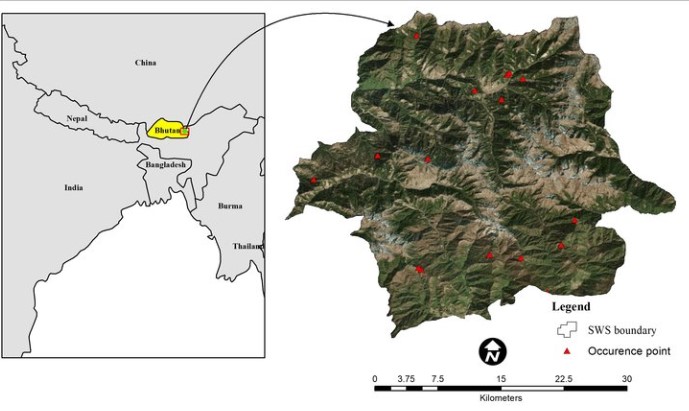
- Located in the eastern most part of Bhutan, the SWS consists alpine meadow and temperate and warm broadleaf forests.
- Three major rivers- Manas Chu, Bada Chu and Dhansiri Chu – have their origin here.
- Red panda, Himalayan black bear, Wild dog, Snow leopard, Barking deer, and Himalayan red fox add to the mammal richness of the park.
- Avifaunal species like Assamese macaque, Blood pheasant, Grey backed shrike, Grey headed woodpecker, Common hoopoe, Rufous vented tit and Dark breasted rose finch are found here too.
- Overgrazing by cattle and overexploitation of forest resources are negatively impacting the biodiversity of the park.
Global Environment Facility (GEF)
- The Global Environment Facility (GEF) was established on the eve of the 1992 Rio Earth Summit to help tackle our planet’s most pressing environmental problems.
- The GEF unites 183 countries in partnership with international institutions, civil society organizations (CSOs), and the private sector to address global environmental issues while supporting national sustainable development initiatives.
- The GEF work focuses on six main areas, including biodiversity, climate change (mitigation and adaptation), chemicals, international waters, land degradation, sustainable forest management/REDD+.
- GEF has also worked on other programs including, Capacity development, Country support programme, Debt-for-nature swaps etc.
India – Bhutan relations
- India and Bhutan have been sharing ties since 1910 when Bhutan became a protectorate of British India, allowing the British to “guide” its foreign affairs and defence.
- When India declared independence in 1947, Bhutan was among the first nations to recognise it.
- Since then, the relationship between the countries has become stronger, especially because Bhutan also has a historically tense relationship with China.
- India and Bhutan also share deep religio-cultural links. Guru Padmasambhava, a Buddhist saint played an influential role in spreading Buddhism and cementing traditional ties between people in both nations.
- The basis for bilateral relations between India and Bhutan was formed by the Indo-Bhutan Treaty of Peace and Friendship of 1949.
- Bhutan shares border with four Indian States: Assam, Arunachal Pradesh, West Bengal and Sikkim.
- Nestled in the Himalayas, Bhutan serves as a buffer between India and China.
- Security of Bhutan’s present borders especially its western border is very important for India.
- Bhutan provides a market for Indian commodities and is a destination for Indian investment. Also, for India, Bhutan is a rich source of hydropower.
- About 60,000 Indian nationals live in Bhutan, employed mostly in the hydro-electric power construction and road industry.
Recently in News: Click Here to read more about India-Bhutan Kholongchhu Project (2nd Article)
-Source: Hindustan Times
CHINA INVESTING, TRADING THROUGH A THIRD PARTY
Focus: GS-II International Relations
Why in news?
India suspects that China could be engaging in unfair trade practices by supplying goods and investments through a third party such as Hong Kong and Singapore.
Details of Alleged Foul play by China
- Data suggests significant indirect inflow of Chinese goods and investments through locations with which India has free trade agreements (FTAs), preferential trade agreements (PTAs) or other bilateral commercial arrangements. This is not only illegal but also injuring domestic industry
- Data shows that total foreign direct investment (FDI) from China is minuscule, but many Indian firms have received Chinese investments.
- Similarly, imports from China have registered a minor decline recently, but at the same time imports from Hong Kong and Singapore have surged.
- According to the Federation of Indian Export Organisations (FIEO), while India’s trade deficit with China narrowed in 2019, the gap with Hong Kong widened sharply.
Way Forward
India needs be extra cautious in case of imports from Singapore because of the India-Singapore Comprehensive Economic Cooperation Agreement (CECA) as well as India-ASEAN {Association of South-East Asin Nations} Free Trade Agreement (FTA) that increase the possibilities of re-routing of Chinese products to India to derive a preferential tariff advantage.
Customs can always ask importers to provide the proof of adhering to the Rules of Origin.
Click Here to read more about India’s Trade Deficit with China
-Source: Hindustan Times
46 MILLION GIRLS WENT MISSING IN INDIA, SAYS UNFPA REPORT
Focus: GS-II Social Justice
Why in news?
UNFPA’s State of the World Population 2020 report says: One in three girls missing globally due to sex selection, both pre- and post-natal, is from India.
Details
- The report cites a 2014 study to state that India has the highest rate of excess female deaths one in nine deaths of females below the age of 5 due to postnatal sex selection (Almost 12%).
- To compare: In Afghanistan, Bangladesh and Pakistan excess female mortality of girls below 5 years of age was under 3 per cent.
- According to estimates averaged over a five-year period (2013-17), annually, there were 1.2 million missing female births, at a global level. India had about 4,60,000 girls ‘missing’ at birth each year.
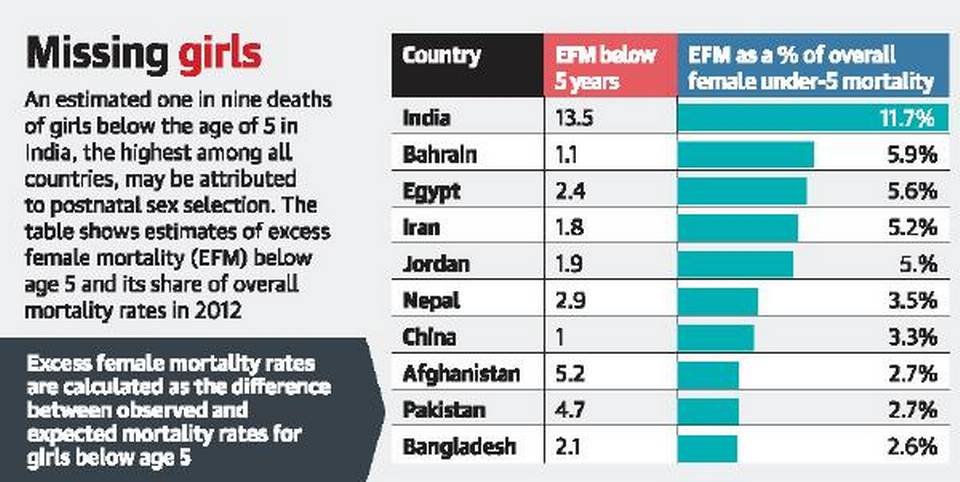
Issue with Selection of Sex
- However, the advent of technology and increased access to ultrasound imaging ensured that parents didn’t have to wait for the birth of their girl child to kill her but could terminate a foetus upon knowing its gender.
- This resulted in the number of girls missing due to female foeticide exceeding those that were missing because of postnatal sex selection.
- These skewed numbers translate into long-term shifts in the proportions of women and men in the population of some countries, the report points out. In many countries this results in a “marriage squeeze” as prospective grooms far outnumber prospective brides, which further results in human trafficking for marriage as well as child marriages.
United Nations Population Fund (UNFPA)
- The United Nations Population Fund (UNFPA) (UNFPA because it was formerly the United Nations Fund for Population Activities) – is a UN organization working for improvement of reproductive health; including creation of national strategies and protocols, and birth control by providing supplies and services.
- The organization has recently been known for its worldwide campaign against child marriage, obstetric fistula and female genital mutilation.
- UNFPA is the world’s largest multilateral source of funding for population and reproductive health programs.
Click Here to read more about India’s Handling of Female Infanticide
-Source: The Hindu
EIGHT CORE INDUSTRIES’ OUTPUT CONTRACTS 23.4% IN MAY 2020
Focus: GS-III Indian Economy, Industry and Infrastructure
Why in news?
The output of eight core infrastructure industries shrank by 23.4% in May 2020 due to the COVID-19 Lockdown.
Details
- Barring fertiliser, all seven sectors — coal, crude oil, natural gas, refinery products, steel, cement, and electricity — had recorded negative growth in May.
- During April-May 2020-21, the sectors output dipped by 30% as compared to 4.5% in the same period previous year.
- These eight industries accounts for 40.27% in the Index of Industrial Production (IIP).
Index of Industrial Production (IIP)
- The Index of Industrial Production (IIP) is an index that shows the growth rates in different industry groups of the economy in a fixed period of time.
- It is compiled and published monthly by the Central Statistical Organization (CSO), Ministry of Statistics and Programme Implementation.
- IIP is a composite indicator that measures the growth rate of industry groups classified under:
- Broad sectors, namely, Mining, Manufacturing, and Electricity.
- Use-based sectors, namely Basic Goods, Capital Goods, and Intermediate Goods
The Eight Core industries of IIP are:
- Coal
- Crude Oil
- Natural Gas
- Refinery Products
- Fertilizers
- Steel
- Cement
- Electricity.
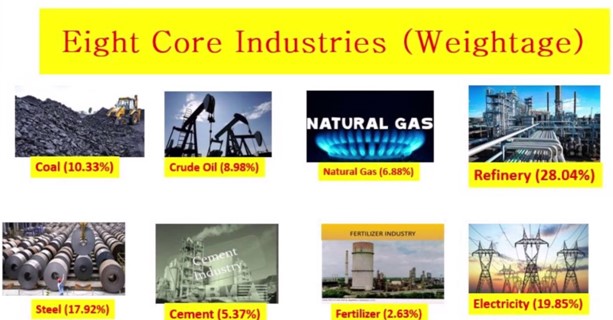
Significance of IIP :
- IIP is the only measure on the physical volume of production.
- It is used by government agencies including the Ministry of Finance, the Reserve Bank of India, etc., for policy-making purposes.
- IIP remains extremely relevant for the calculation of the quarterly and advance GDP estimates.
-Source: The Hindu, Hindustan Times
GLOBBA ANDERSONII THOUGHT TO BE EXTINCT FOUND IN SIKKIM
Focus: GS-III Environment and Ecology, Prelims
Why in news?
A team of researchers rediscovered a rare and critically endangered plant species called Globba andersonii from the Sikkim Himalayas near the Teesta river valley region.
The plant, known commonly as ‘dancing ladies’ or ‘swan flowers’ was thought to have been extinct for more than 135 years.
Globba andersonii
- Globba is a genus of plants in the ginger family.
- It contains about 100 species, native to China, the Indian Subcontinent, Southeast Asia, New Guinea, the Bismarck Archipelago and Queensland.
- Globba andersonii are characterised by white flowers, non-appendaged anthers, and a yellowish “lip”.
- Globba andersonii is Classified by IUCN as Critically endangered and “narrowly endemic” and the species is restricted mainly to Teesta River Valley region which includes the Sikkim Himalays and Darjeeling hill ranges.
- As no live collections were made for the last 136 years, it was considered as presumably extinct in the wild.
Teesta River
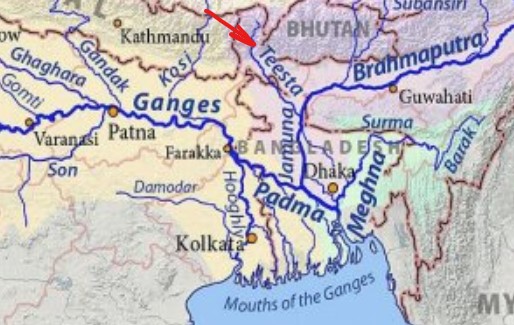
- Teesta River rises in the eastern Himalayas, flows through the Indian states of Sikkim and West Bengal through Bangladesh and enters the Bay of Bengal.
- It forms the border between Sikkim and West Bengal.
- It joins the Jamuna River at Fulchhari in Bangladesh.
- The Teesta River originates from the Pahunri (or Teesta Kangse) glacier.
-Source: The Hindu




